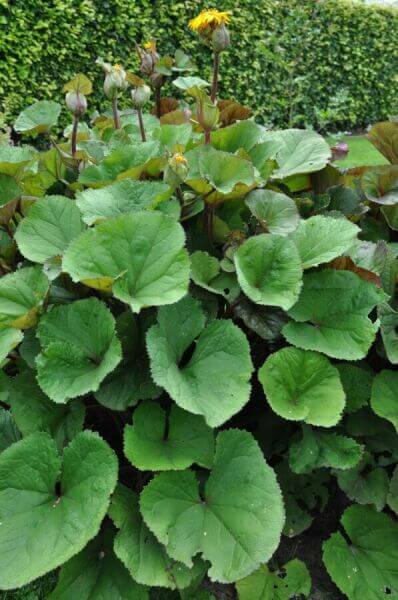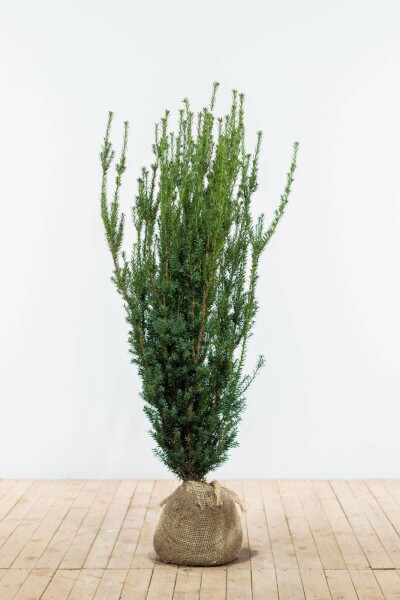Hedge Plants For Noise Buffering
Hedge Plants For Noise Buffering
Blog Article
Best Hedging Plants For Green Dividers
Boost your garden's attraction with rich hedge ranges such as Yew (Taxus), Thuja, Laurel, Photinia, and Bamboo, celebrated for their structural stability and environmental advantages.
Yew and Thuja provide evergreen coverage and winter season resilience, while Laurel provides rapid growth and broad, aromatic leaves.
Photinia adds seasonal appeal with its lively red foliage, and Bamboo lends a low-maintenance, tranquil ambiance.
These hedges improve air quality, minimize sound, and create tranquil, personal areas.
Proper planting, spacing, and upkeep guarantee vigorous growth and environmental consistency.
Explore how these rich ranges can raise your garden's beauty and well-being.
Secret Takeaways
Change Your Garden With Lush Hedge Ranges
- Select Yew for its thick, evergreen development and unparalleled longevity.
- Select Laurel for its quick growth and broad leaves, guaranteeing quick privacy.
- Pick Photinia for its dynamic seasonal foliage, which turns a striking dark red.
- Make use of Bamboo for a low-maintenance, winter-hardy hedge with visual appeal.
- Space plants 2-3 per meter and prune frequently for optimum development and health.
Popular Hedge Plants
When changing a garden with rich hedge varieties, it's necessary to consider popular hedge plants such as Yew, Thuja, Laurel, and Photinia due to their unique attributes and benefits.
Yew (Taxus) is highly respected for its durability and thick, green development, making it a prime option for sustaining landscapes.
Thuja is kept in mind for its evergreen foliage and robust winter season strength.
Photinia adds seasonal vibrancy with red leaves that darken with time, creating dynamic visual appeal.
Laurel offers quick development and aromatic, broad leaves, perfect for fast privacy.
Additionally, Bamboo is an outstanding choice for ambiance, using a low-maintenance, winter-hardy choice that improves the garden's visual with its classy, swaying walking canes.
These choices deal with a range of horticultural requirements and choices.
Advantages of Garden Hedges
Garden hedges offer a plethora of advantages, making them an important addition to any landscape. These natural barriers are affordable to implement and offer significant wind defense, boosting air flow and contributing to noise decrease. The dense foliage of hedges like Thuja and Beech ensures personal privacy by obstructing presence, creating a peaceful and secluded environment.
Hedges also play a crucial function in microclimate regulation, supplying a steady environment that fosters plant development and minimizes temperature level fluctuations. Their complex leaf structures filter toxins, improving air quality and contributing to a much healthier garden ecosystem.
Furthermore, hedges stand out in noise reduction, taking in and deflecting acoustic waves to lower ambient noise levels. This dual performance of providing both acoustic and visual personal privacy enhances the general serenity and visual appeal of any garden.
Planting and Upkeep Tips
For an effective hedge, meticulous preparation of the planting area is important. Ensure the soil has proper pH and drainage to support strong root development.
Area the plants properly for the chosen species. Water the hedge often throughout its preliminary development stage, changing as required with seasonal modifications.
Carry out a systematic pest control and disease prevention strategy, using organic or chemical treatments when needed. Routinely check for aphids, mites, and fungal infections.
Apply mulch to retain moisture and suppress weeds. Seasonal pruning promotes dense development and air blood circulation, essential for plant health.
Following these guidelines will assist you cultivate a lively, well-maintained hedge that boosts the appeal of your garden.
Spacing and Cutting Guidelines
Spacing and Trimming Standards
Correct spacing and cutting are crucial for cultivating healthy, aesthetically appealing hedges. Appropriate spacing guarantees each plant receives sufficient nutrients, light, and air flow.
Follow these standards for ideal hedge upkeep:
- Spacing: Position hedge plants 2-3 plants per meter to encourage robust development.
- Pruning Methods: Regular pruning is essential for keeping preferred hedge height and shape. Trim brand-new development in summer season and cut back older wood throughout winter.
- Seasonal Care: Change cutting schedules and approaches according to seasonal requirements to ensure plant health.
- Hedge Height: Regularly display and trim to keep the preferred hedge height and attain uniform visual appeals.
Following these actions will ensure your hedge thrives, improving both the appeal and performance of your garden.
Selecting the Right Hedge
Picking the Right Hedge
Choosing the proper hedge involves assessing aspects such as mature height, foliage density, and ecological resilience. Successful hedge plant choice needs understanding each species' growth qualities and site-specific flexibility.
For example, Yew (Taxus) provides exceptional longevity and dense growth, while Thuja is notable for its winter strength. In addition, considering maintenance requirements is vital; fast-growing types like Laurel or Privet demand routine cutting, whereas low-maintenance alternatives like Bamboo or Ivy may be preferable for those looking for minimal maintenance.
Ecological aspects such as soil type, light accessibility, and wetness conditions should also direct the selection procedure. This mindful approach ensures the selected hedges will thrive, providing both aesthetic and functional advantages to the garden landscape.
Delivery and Planting Suggestions
To guarantee your hedge plants thrive, they should be delivered by specialized carriers and planted without delay upon arrival.
Follow these vital actions for successful planting:
- Soil Preparation: Enhance the soil with organic matter to enhance drainage and nutrient content.
- Planting Depth: Produce a trench twice the width and equal to the depth of the root ball.
- Watering Methods: Water thoroughly after planting, keeping the soil regularly damp but not saturated.
- Mulching: Apply a layer of mulch to retain moisture and reduce weeds.
Client Assistance and Service
Offered the important role of timely help in horticultural pursuits, our client assistance team is offered 6 days a week through telephone, e-mail, and social media to offer skilled recommendations and quickly address any issues. Their dedication to quick reaction times ensures consumer complete satisfaction by dealing with inquiries connected to plant health, optimal planting techniques, and maintenance schedules.

-------------------
Email
Within 24 hours
This detailed support group, reinforced by a stellar 9.3/ 10 consumer rating, highlights our commitment to boosting the gardening experience for each client.
Regularly Asked Questions
The Length Of Time Does It Take for Hedge Plants to Develop?
Hedge plants normally require one to 3 years to end up being fully established, with the specific duration differing by species and growing conditions.
Effective care throughout this critical duration is vital for robust development. Consistent watering, alert weed control, and appropriate fertilizer application are essential in promoting strong root development.
For example, fast-growing types like Laurel may establish more rapidly, while slower-growing varieties such as Yew may take longer. Persistent maintenance speeds up the establishment process, leading to dense and healthy hedges.
What Are the Finest Hedge Plants for Personal Privacy?
The question of the best hedge plants for personal privacy includes evaluating evergreen and deciduous choices.
Evergreen hedges like Thuja, Laurel, and Cypress supply year-round protection, guaranteeing constant personal privacy.
In contrast, deciduous hedges such as Beech offer seasonal privacy, shedding leaves in chillier months.
Secret upkeep tips for privacy hedges include regular trimming, fertilizing in spring, and appropriate spacing-- usually 2 to 3 plants per meter.
In addition, consistent watering and diligent weed elimination are crucial for promoting healthy, dense development.
Can Hedge Plants Attract Wildlife to My Garden?
Yes, hedge plants can draw in wildlife to your garden by offering vital advantages like shelter, food, and nesting sites, therefore boosting regional biodiversity. For example, yew, holly, and laurel are excellent for attracting birds, while ivy supports a range of pests.
However, it is very important to note that there are some drawbacks, such as increased upkeep to manage pests and routine maintenance. Carefully picking and preserving hedge varieties can assist stabilize these drawbacks and advantages, ultimately cultivating a sustainable and dynamic community in your garden.
Are There Any Flowering Hedge Plants Available?
Yes, there are flowering hedge plants available that can enhance the appeal of your garden.
For example, Elaeagnus, also referred to as Olive Willow, produces fragrant white flowers in the fall, including a touch of beauty.
Photinia, another popular choice, showcases dynamic red leaves that mature into an abundant green, creating a vibrant visual effect throughout the seasons.
To guarantee these plants thrive, it's necessary to practice proper pruning strategies and seasonal maintenance, such as cutting brand-new growth in the summer season and cutting back in the winter season.
These procedures will assist keep the health and visual appeal of your flowering hedges.
How Do I Prevent Bugs in My Hedge Plants?
To prevent pests in hedge plants, utilize natural bug control methods and keep correct hedge care. Introduce useful pests like ladybugs, which prey on hazardous bugs, to create a well balanced community.
Routinely check your hedges for indications of infestation and immediately remove any affected parts to prevent the spread. Guarantee the health of your hedges by using well balanced fertilizers and supplying appropriate water.
Utilize mulching to retain soil moisture and proper spacing to minimize plant tension and promote robust development. These practices jointly assist in decreasing pest issues and maintaining a healthy hedge.
Conclusion
In essence, choosing the best hedge varieties such as Yew, Thuja, and Laurel can transform any garden into a serene sanctuary. These plants supply year-round plant, boost visual appeal, and deal practical benefits like noise decrease and wind defense.
Appropriate planting strategies, precise spacing, consistent watering, and seasonal trimming are essential for optimum development.
Reliable shipment services and professional client support make sure a smooth experience from purchase to planting, making it simpler than ever to raise your outside space.
Garden hedges use a plethora of advantages, making them a valuable addition to any more info landscape. These natural barriers are cost-effective to implement and supply considerable wind protection, boosting air flow and contributing to noise decrease. The thick foliage of hedges like Thuja and Beech guarantees privacy by blocking visibility, developing a secluded and serene environment.

Pruning Methods: Regular pruning is vital for preserving preferred hedge height and shape. Trim new growth in summer season and cut back older wood throughout winter.
Report this page